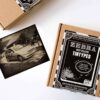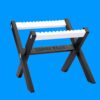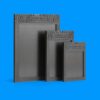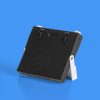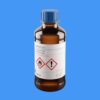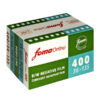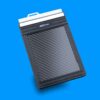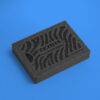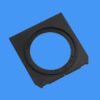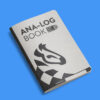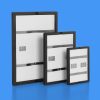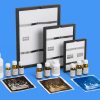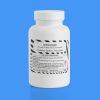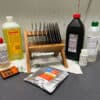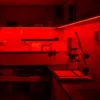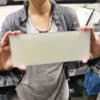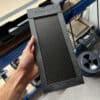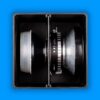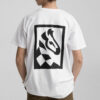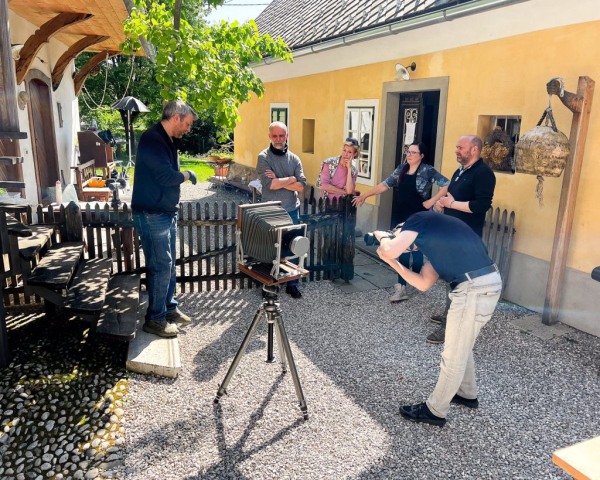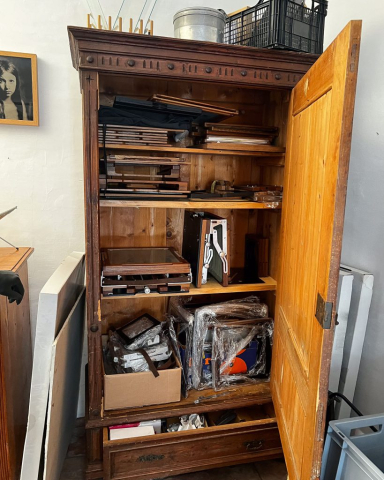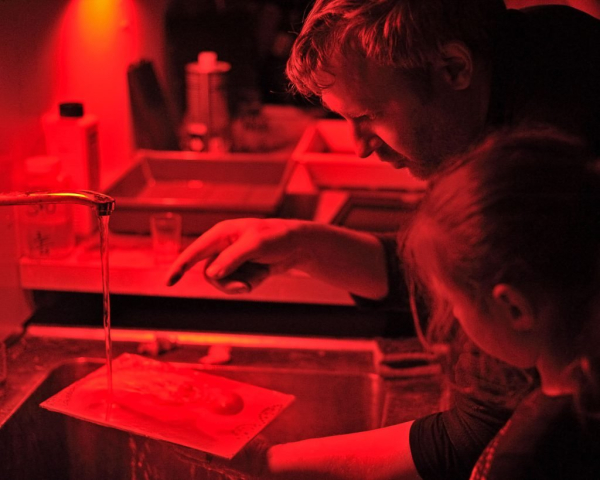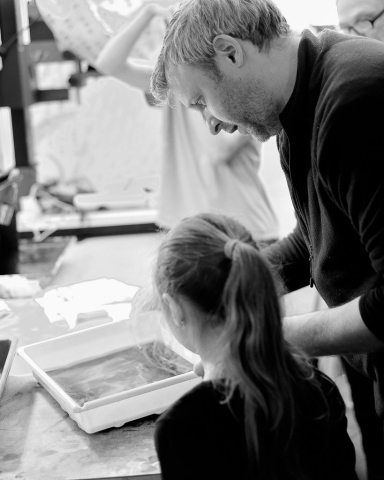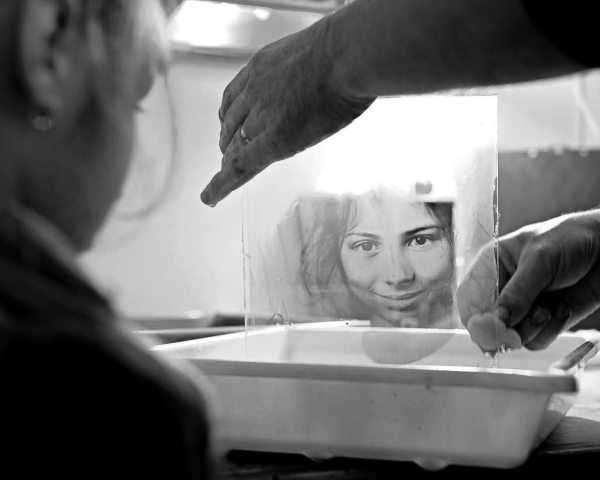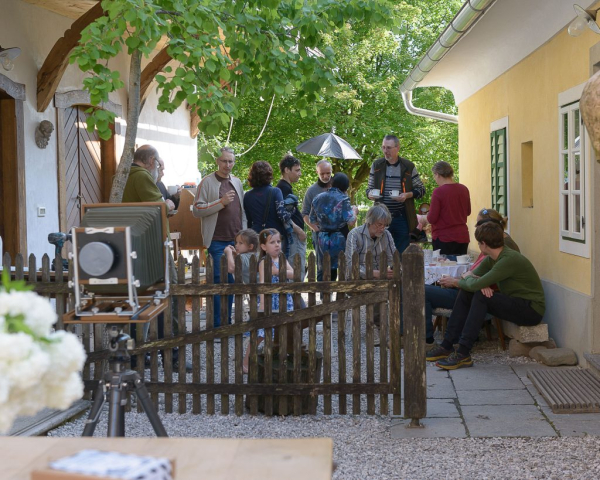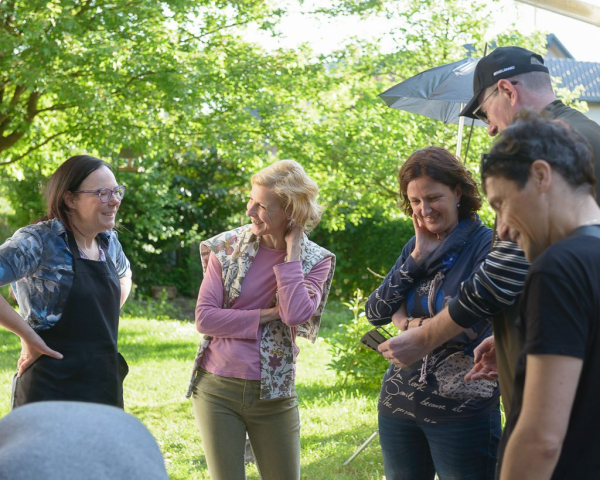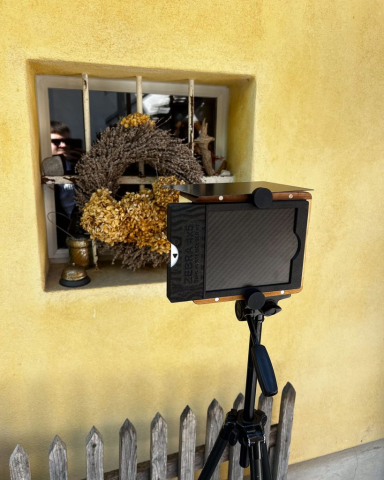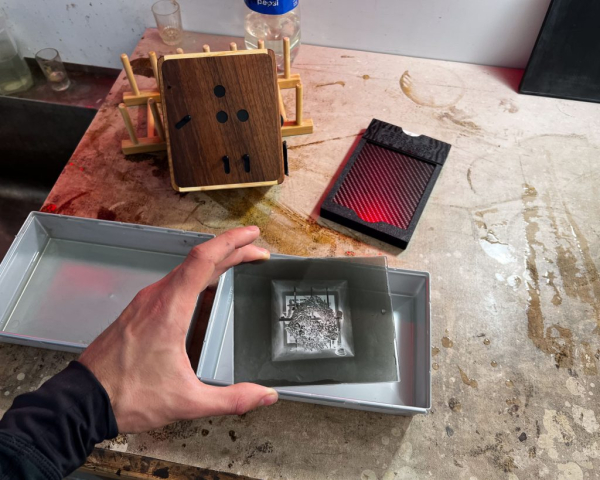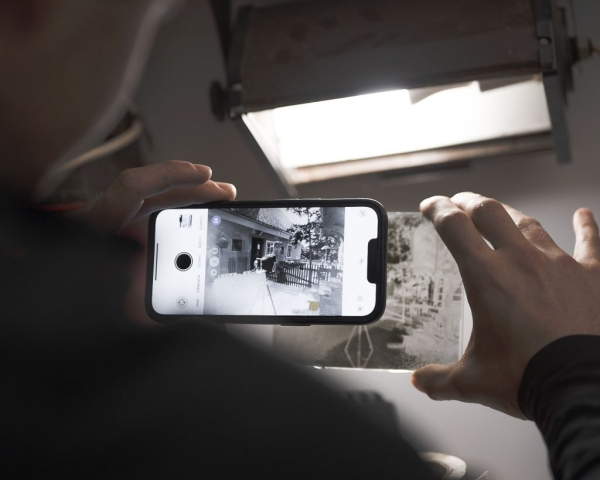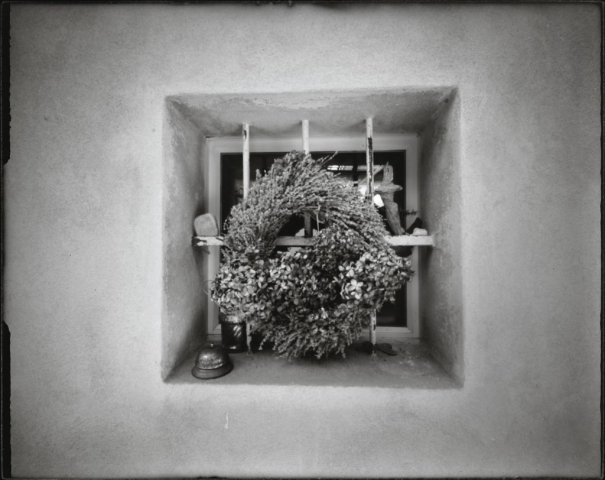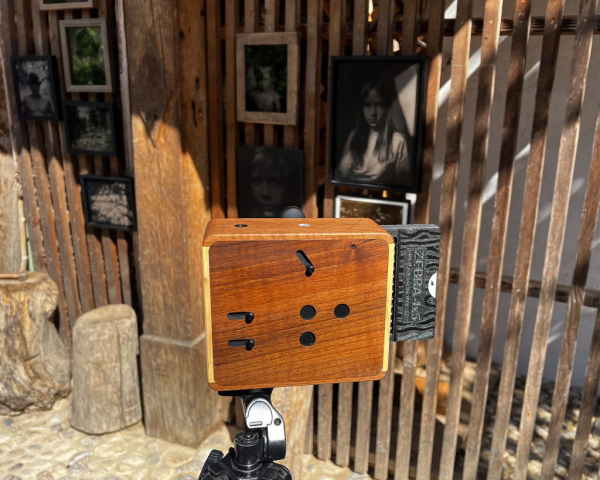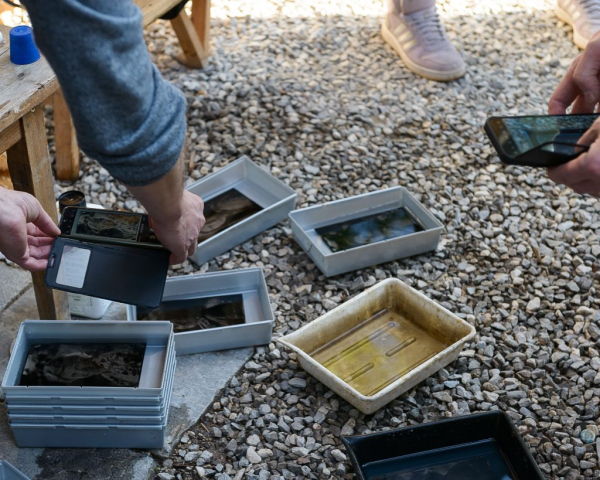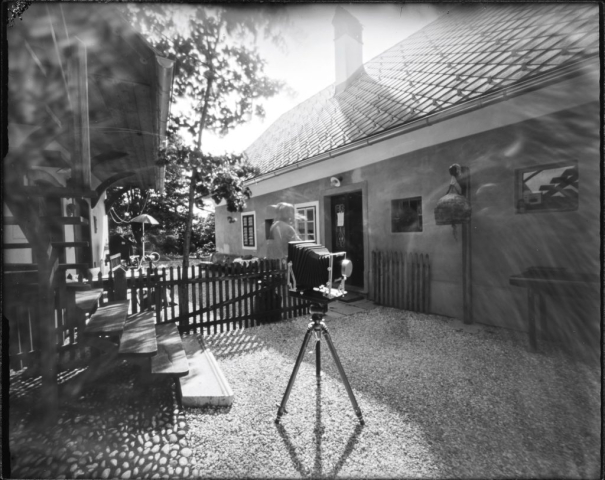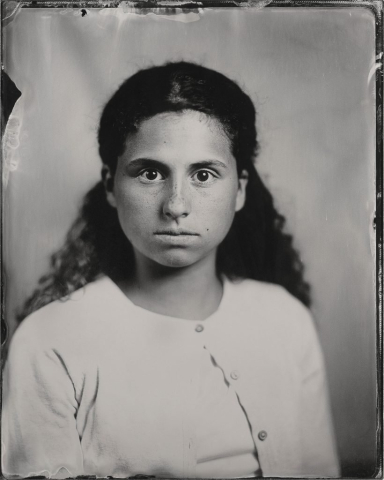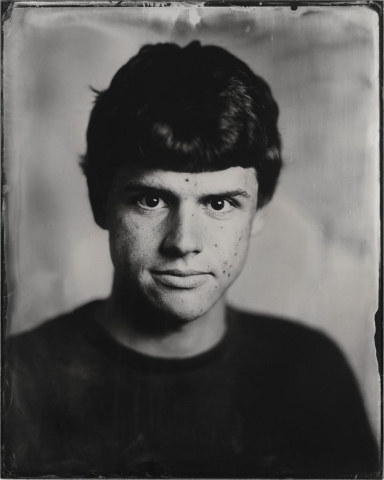Plate Photography Connects People: World Wet Plate Photography Day 2024 at Peter’s Place
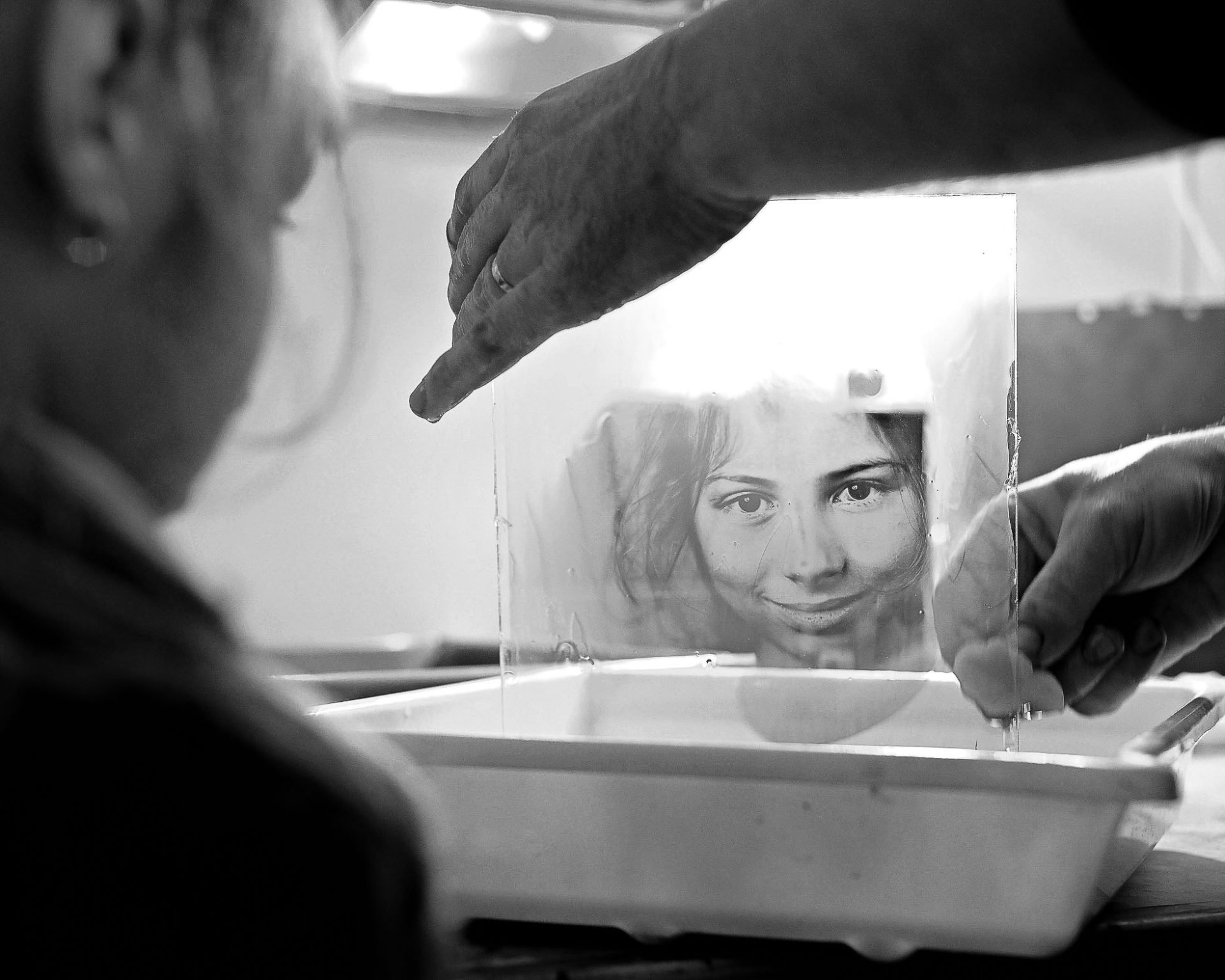
Hello Zebra Family,
another year, another opportunity to meet good friends and share our passion for photography. As always, I was there with Dry Plates to “ruin the party.” 😄 Jokes aside, I always look forward to this day because it gives me a rare opportunity to take a shot or two myself, which has become increasingly rare given all the work in the workshop.
In my bag, I packed some Zebra Standard Dry Plates, a holder, an Ondu 4×5 Pinhole Camera, a Zebra New Cyanotype solution, and the prototype Zebra Contact Printing Frame (coming soon!). When I arrived at Peter’s place, it was a somewhat cloudy morning, so I crossed my fingers for some sun. Otherwise, my wish to use the Ondu Pinhole camera would remain unfulfilled. You might wonder why that is? Well, the Ondu Pinholes have an aperture of f/186, and when combined with ISO 2 Zebra Standard Glass Dry Plates and the reciprocity failure that doubles the exposure time, your exposure is not counted in minutes but in hours. The sun is your only friend here.
It was still very early, so visitors had yet to arrive. As always, Peter and I got into a discussion, brainstorming and sharing ideas about Primer cameras, lenses, future products, and more. I showed him the final prototype of the Zebra Contact Printing Frame, which he really liked. It’s amazing how many ideas two like-minded individuals with a shared interest, attention to detail, and design can generate. A stranger listening in might think we’re a bit mad, but at least time flew by, and the sun began inviting us outside to a beautiful day ahead.
Peter will know the exact number, but this was at least the fourth consecutive World Wet Plate Day meetup at his place. Everything is organized in a relaxed manner on a volunteer basis to bring together introverted photographers and share the beauty of plate photography with visitors. There are exhibitions, practical demonstrations of the Wet Plate technique, and opportunities for beautiful glass portraits. Slovenia is a tiny country, so these meetups usually turn into family and friends reunions. Of course, besides all the Wet Platers, I add my two cents with Dry Plates as well.
This brings us back to my plan for the day: to finally try out the Ondu Pinhole camera, made by my good friend Elvis, who is also Slovenian! The camera is a work of beauty, handcrafted from ash or walnut wood, with ingenious features like a magnetic filter holder. As I mentioned earlier, not every day is a good day for plate photography with a pinhole camera, but today was different. The sky was blue, and I was already wandering around Peter’s homestead, looking for subjects. He and his family live in a more than 100-year-old house that he renovated, so there were plenty of opportunities for good images. I decided to capture a beautiful, tiny window surrounded by thick walls for my first subject. Although it was sunny, the window was shaded by the roof, so the meter showed an exposure time of 20 minutes at f/186. Taking the reciprocity failure of the Zebra Dry Plates into account, I doubled the exposure time to 40 minutes. I set up the camera on a tripod and hoped for the best.
If analog processes are slower than digital, pinhole photography with plates is about as slow as it gets. 😄 I had tried using the Ondu camera a few times in the woods before, but it was always overcast and shady, leading to exposure times of several hours. However, it’s all about planning and organization. Ideally, when using plates, you should set up the camera at the start of your walk or hike and pick it up on the way back. They’re made of wood and blend seamlessly with nature, so theft isn’t a concern. If you’re looking for a tip on using this camera, that’s probably it.
During those 40 minutes, the sun hid behind the clouds a couple of times, so I extended the exposure by another 10 minutes. I didn’t bring any chemicals to Peter’s place since his darkroom usually has some developer and fixer available. This time, he offered Kodak T-Max developer, which I hadn’t used before, but it was a perfect chance to try it out. He had it pre-diluted to a 1:4 ratio, but I diluted it further to 1:8 to give me more time to develop by inspection. I developed the plate for 3 minutes and 30 seconds, and the results were fantastic. The T-Max balanced the high contrast of the emulsion, evening out the tonality in both the highlights and shadows. I knew immediately that T-Max had to be added to the Zebra Dev. Chart ASAP!
More people began to gather, so I challenged myself to capture the spirit of the central gathering space using the Primer 12×12 camera. I hoped that a few folks would have long conversations and stand still for the 20-minute exposure. I must say that I really enjoy the unpredictability of analog photography—you never know what you’ll end up with until the plate is fully processed. Many things can go wrong, but when they all go right, the results are stunning and worth much more to me than perfection. After 20 minutes, it was time to develop the plate in T-Max again. Once more, the result was perfect, and I was thrilled to see at least one person in the scene right behind the Primer camera. Unfortunately at the end I ran out of time to do some Cyanotype contact prints at the spot but will for sure do them back in Zebra headquarters. While this exposure may not best represent the World Wet Plate Day meetup, given that all the visitors vanished, you’ll have to trust my final words.
I’d like to thank everyone for coming, for sharing your passion for plate photography, and for helping us keep this beautiful craft alive. I had a wonderful time, and I look forward to seeing you all again next year! Now it’s time to get back to work and turn ideas into reality, so stay tuned!
Thank you Janez Pelko, Peter Škrlep & Matej Artač for the photos!

